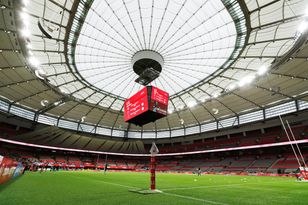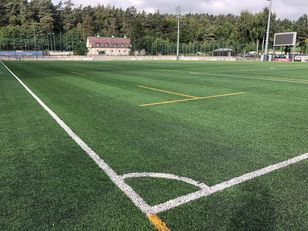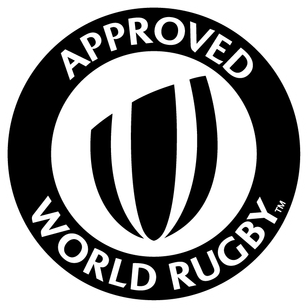Advice for facility owners
Headline facts
- Only Regulation 22 compliant artificial turf fields can be use for rugby training or matches
- Any field from any supplier that meets the criteria can be considered compliant
- Fields must be tested on installation and then every two years by an Accredited Test Institute to maintain compliance
What does an artificial turf system comprise of?
- Performance infill
- Stabilising infill
- Fibres
- Carpet backing: The carpet backing is the layer that the carpet fibres are stitched into.
- A shock absorbing layer (optional): This is the Shock Pad that sits underneath the backing of the turf. This is an optional layer, however with current technologies it is unlikely that you will achieve the correct test results without one.
- Sub-base: This is the foundation which the turf is built upon.

Why is artificial turf used in rugby and why do World Rugby regulate it?
Artificial turf, and how it differs to natural turf, has several factors that make it appealing for rugby:
Playing time
- At least 30 hours playing time per week.
- Perfect for intense usage
- Great fit for multi-sport facilities
Financial
- Lower running costs
- Additional revenue generator due to longer playing hours.
Environmental
- Less water required.
- Recyclable
Climatic
- Better suited to extreme weather conditions
- Consistent surface throughout the playing season
World Rugby regulate the use of artificial turf for both training and matches. The requirements are set out in Regulation 22 and the World Rugby Turf Performance Specification.
World Rugby recognised that there is a huge variation in the quality and performance of artificial turf surfaces and wanted to work to bring consistency and quality to surfaces being used for rugby. This led to the development of Regulation 22 in 2003 to regulate the use of artificial turf surfaces. since then, it has continued to be developed and improved to reflect the changes to products, manufacturing processes, environmental factors, and the needs of the game.
Player Welfare is World Rugby's number one priority, so Regulation 22 puts player interaction performance and the ability of a surface to maintain that performance at the core of the development of the regulation. To ensure that these performance requirements are met, World Rugby require all fields to be retested at least every two years.
World Rugby do not regulate the use of natural turf in the same way as their performance is largely climate and condition dependent, so consistency is not easily achieved.
Other FAQs and Advice and facility owners
Use a Preferred Turf Producer
World Rugby Preferred Turf Producers (PTPs) are artificial turf manufacturers, that World Rugby recognise as the most experienced and best providers of artificial surfaces for rugby.
Shop around for an Accredited Test Institute
Installing an artificial surface can be costly. One way which you may be able to cut down costs is to shop around for your Accredited Test Institute (ATI), to carry out the testing of your surface. The closest ATI is not always the cheapest!
Factor the cost of testing into your budget
Factoring the cost of testing into your procurement budget is very important. The average life of an artificial field is approximately 10 years, and for it to be possible to continue to play rugby on the surface it must be retested at least every 2 years (as per the requirements in the Rugby Turf Performance Specification) meaning that the field will need to be tested at least 5 times during its lifetime. Ask if testing costs can be built into your procurement agreement with your manufacturer.
If there are multiple artificial fields in the same area, get them tested at the same time
One of the biggest costs for ATIs to test a field is for the travel of their technician and their equipment to perform the test. For this reason, it is much cheaper to get the fields in the same area tested all at once. If you have installed a field and need to get it tested, consider contacting other local owners or artificial pitches (not just rugby) to arrange a group test.
Have the sub-base tested before installation
Underneath the artificial turf system sits the sub-base, which is the foundation. There can sometimes be issues with the sub-base that will cause the surface to fail its World Rugby compliance testing. These issues can be very costly to rectify after the surface has been installed. Because of this, World Rugby strongly recommend having the sub-base tested before the installation of a surface to reduce the risk of any issues arising.








